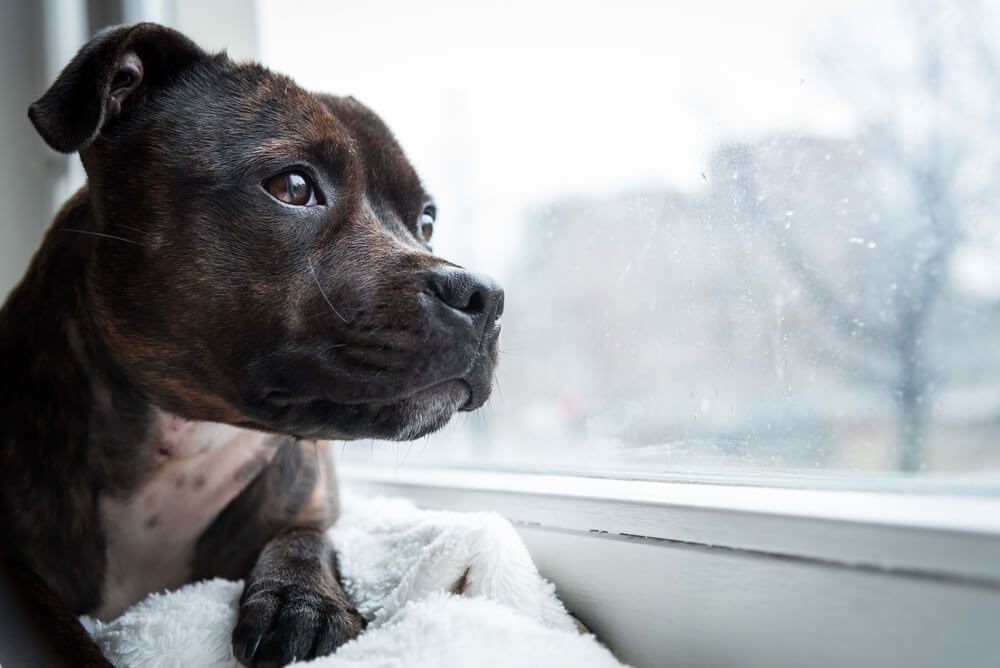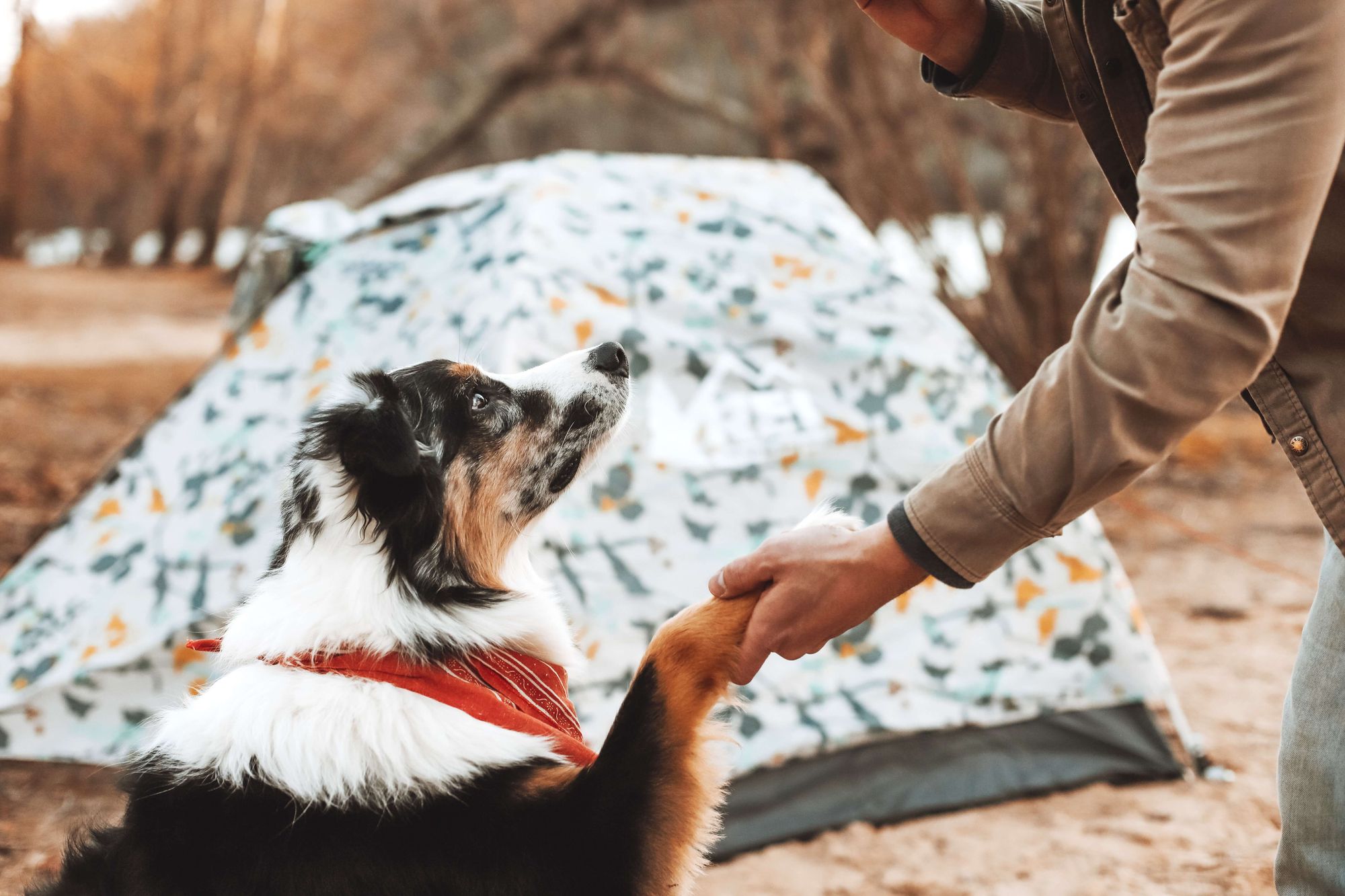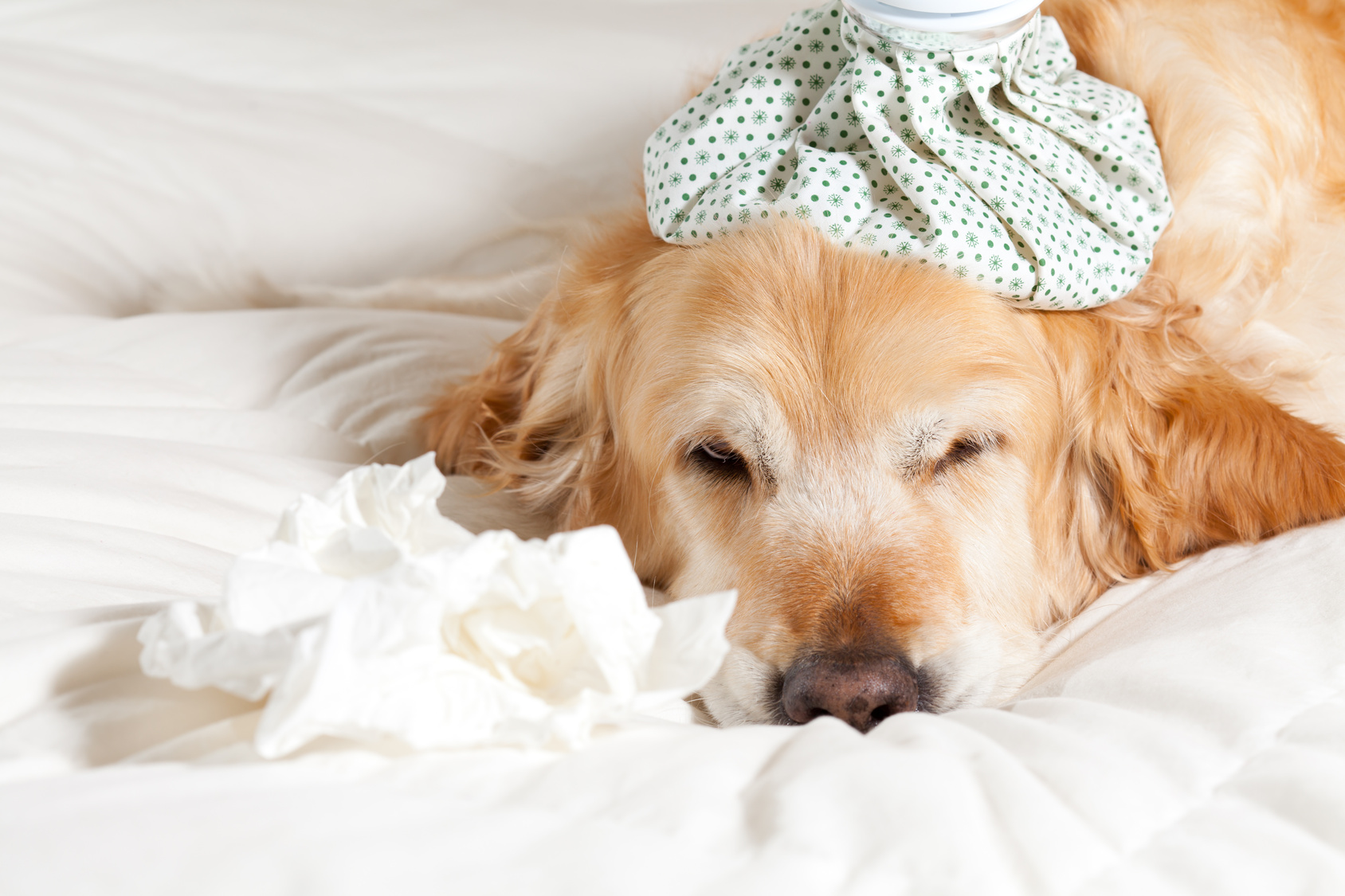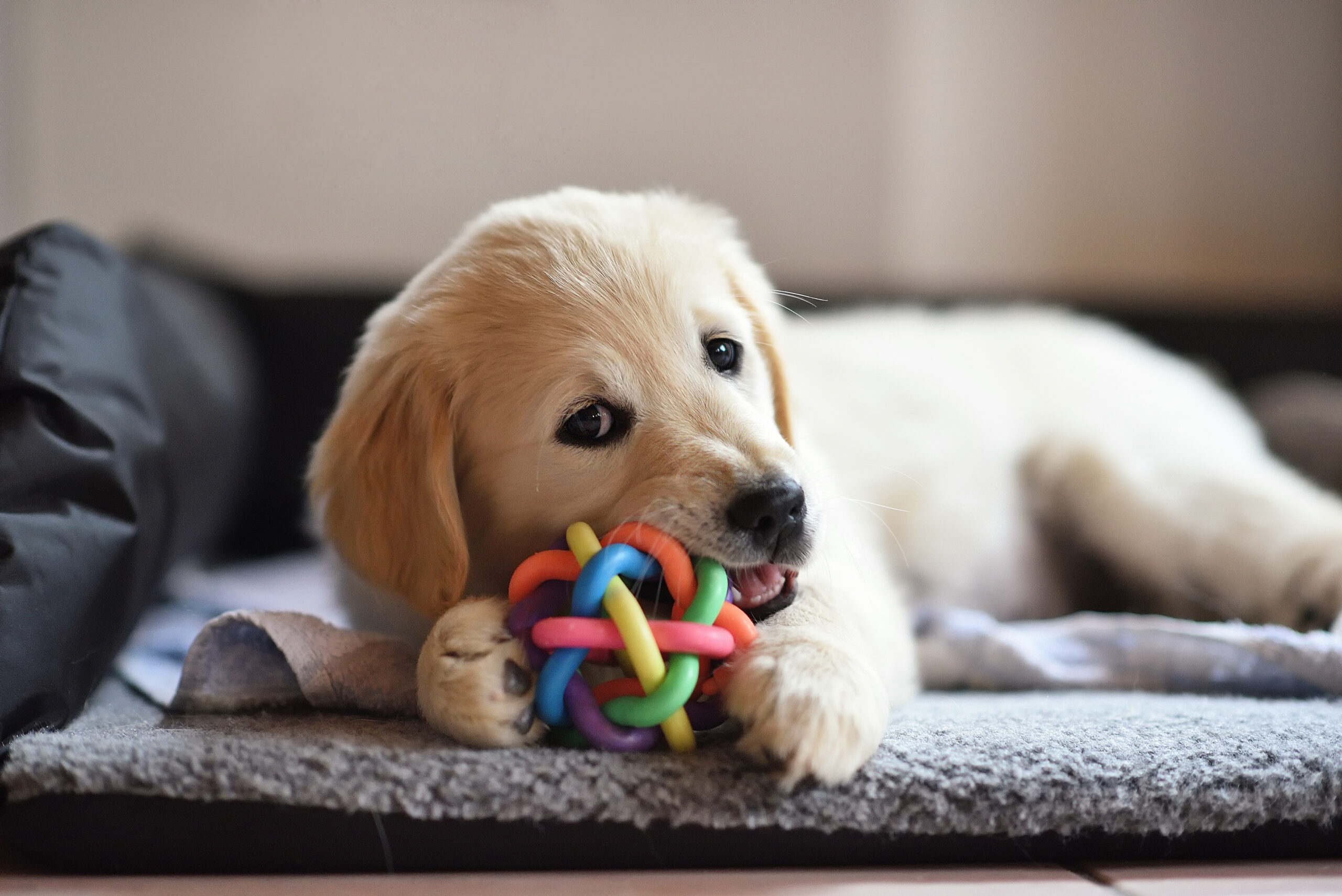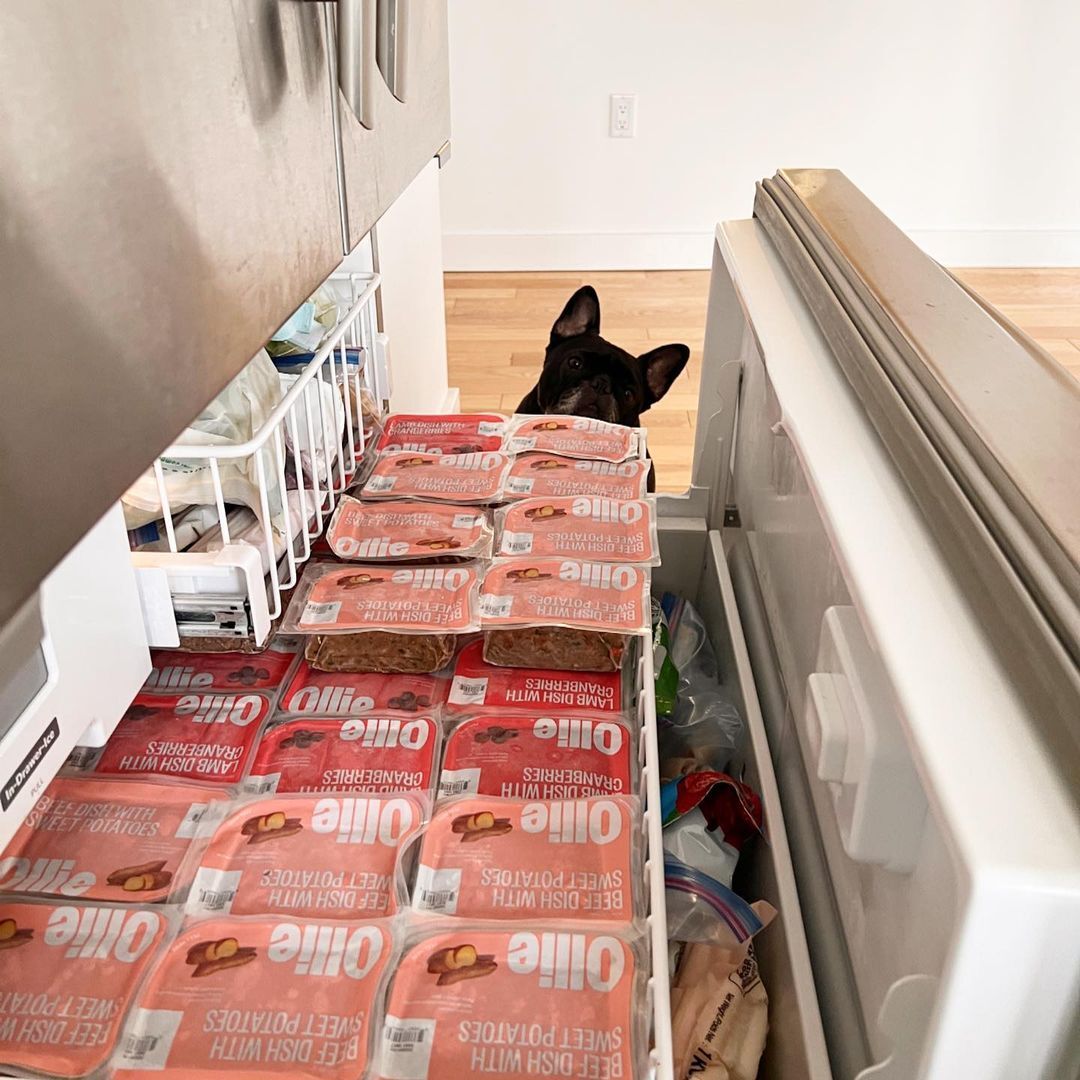Hey Ollie blog readers! We’re offering you an exclusive 60% OFF your starter box! Try now!
While a big storm rolling in might be the perfect excuse to get cozy on the couch with some popcorn and a good book or movie marathon, not everyone in your house may be as excited about this.
Many dogs find thunderstorms scary. From simply going on “pee strike” and refusing to go outside to a full-blown anxiety attack requiring medication some dogs just don’t have favorable reactions to this type of severe weather. Learn how to tell if your dog is stressed by the storms and how you can help.
Thunderstorm anxiety symptoms in dogs
When a thunderstorm (or even just heavy rain) happens, you may see a number of different reactions from your dog. According to Shallowford Animal Hospital in Lewisville, NC you want to keep your eye out for the following signs of fear, stress and anxiety when a storm might be (or is) rolling through your area.
- Lowered ears and tail, wide eyes
- Pacing
- Panting and drooling
- Trembling
- Whining or howling
- Hiding
- Involuntary indoor urination
- Destructive behavior or even self-harm (i.e., clawing in an effort to escape, running away
Some of these might not seem like signs of stress or fear at first and unless you’re experienced at spotting some of the more subtle signs like widening eyes you might miss them.
What you don’t want to do is punish your dog for being nervous or afraid. This can create additional negative associations for your pup making their fear even worse!
By being proactive and helping your dog feel safe and comfortable at the first signs of nerves you can hopefully avoid having your dog’s stress signals escalate to distructive behavior, injuries or self-harm.
Another important thing to know about thunderstorm anxiety is that it may not show up until your dog is considerably older. Some dogs don’t start to stress about storms until they are anywhere between two and four years old.
Tips for helping your dog stay calm during storms
1. Watch the weather and learn your pup’s triggers
In order to be proactive and help your dog manage their thunderstorm anxiety, you’ll want to keep a close eye on the weather and watch for your dog’s triggers. Some pups may start to show signs of stress hours before the storm even arrives.
How is this possible? Your dog may “know” the storm is on the way based on changes in barometric pressure, smells, static electricity, or even changes in the wind. These will happen often before the more obvious signs like heavy cloudcover, low level rumblings and rain and thunder or lightening. So, if you dog is acting like a storm is coming, believe them.
2. Make a safe space
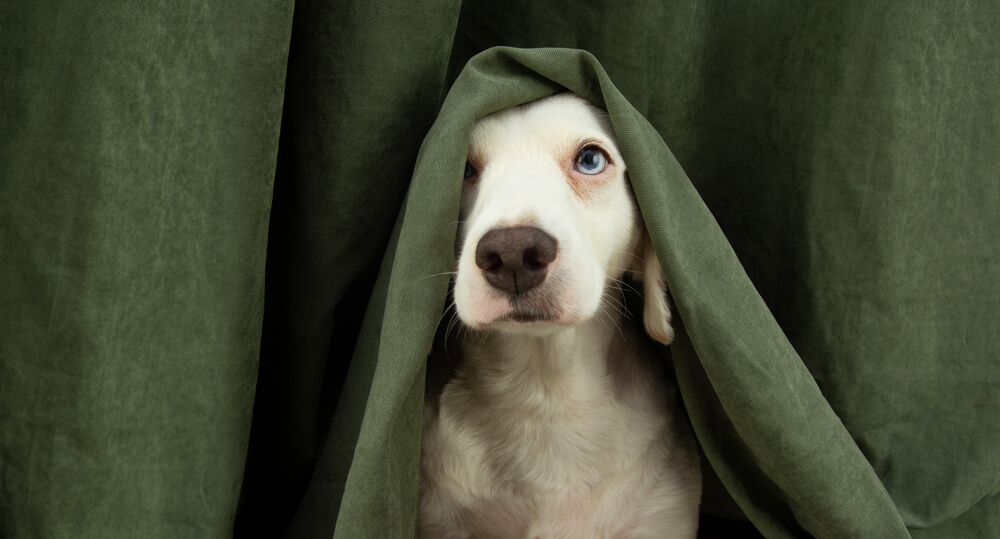
Sometimes your best bet is to help your dog find a space where they feel safe to wait out the storm. Places like a crate with a blanket over it (and the door open so they don’t feel trapped), the basement, a windowless room or corner with a cozy bed or blanket will be ideal. Even a burrow style of bed might be just the thing your dog needs to feel safe. These beds have a “hood” so your dog can hide in them and feel safe.
3. Try a distraction
If your dog isn’t in a full blown panic this might be more successful. You can try calming music or a movie, a chew or interactive toy if your dog is interested in playing or eating, or anything else your dog enjoys. Pairing a higher value treat with the storm may help your dog build positive associations with thunderstorms too.
4. Chat with your vet
If you’re struggling to help your dog, have a chat with your vet. They can help you come up with a plan to best support your pup. The vet might start by recommending some desensitization exercises like playing thunderstorm sounds at a low level for a short period of time and pairing it with some tasty treats. You can work to gradually turn up the sound and duration until your pup is more comfortable. You can also talk about products like calming chews, thundershirts and other ideas to soothe your pup’s anxiety.
Finally, if none of these approaches are working you might ask about a prescription for some medication you can give your pet to help keep them calm during a storm. The goal is to prevent your pet from getting overly stressed and/or hurting themselves.
Whether you have a new puppy and you don’t want them to develop a fear of thunderstorms or an older dog who is showing signs of stress, you will want to stay ahead of their fear and help support them the best you can. This may take some planning and patience on your part but as a pet parent it is important that you help to make sure that your pet feels safe and comfortable.
The Ollie blog is devoted to helping pet parents lead healthier lives with their pups. If you want to learn more about our fresh, human-grade food, check out MyOllie.com.
Tagged As:

The nutrition your dog needs,
the food they want.

Enjoying our articles? Subscribe our Newsletters and get new articles directly to your inbox
You might also like
20 June 2024
9 MINS READ
Owner Guide: New Puppy Checklist
Welcoming a new puppy into your life and home is an exciting time filled with “firsts,” but this magical time also requires careful planning to ensure a positive transition for your pup. Prepa…
by Ollie Pets
22 June 2023
6 MINS READ
Why Are Dogs Scared of Fireworks? How to Help Your Dog Cope With Fireworks Anxiety
Fireworks may be summer’s soundtrack, but these loud and sudden noises signal terror for many noise-sensitive pups. Learn why dogs become so rattled by fireworks and how you can help your pup fee…
4 March 2023
2 MINS READ
Tips for Organizing Your Ollie
Keep your pup’s mealtime routine neat and tidy with these organizing tips and tricks from the Ollie pack.
by Ollie Pets






